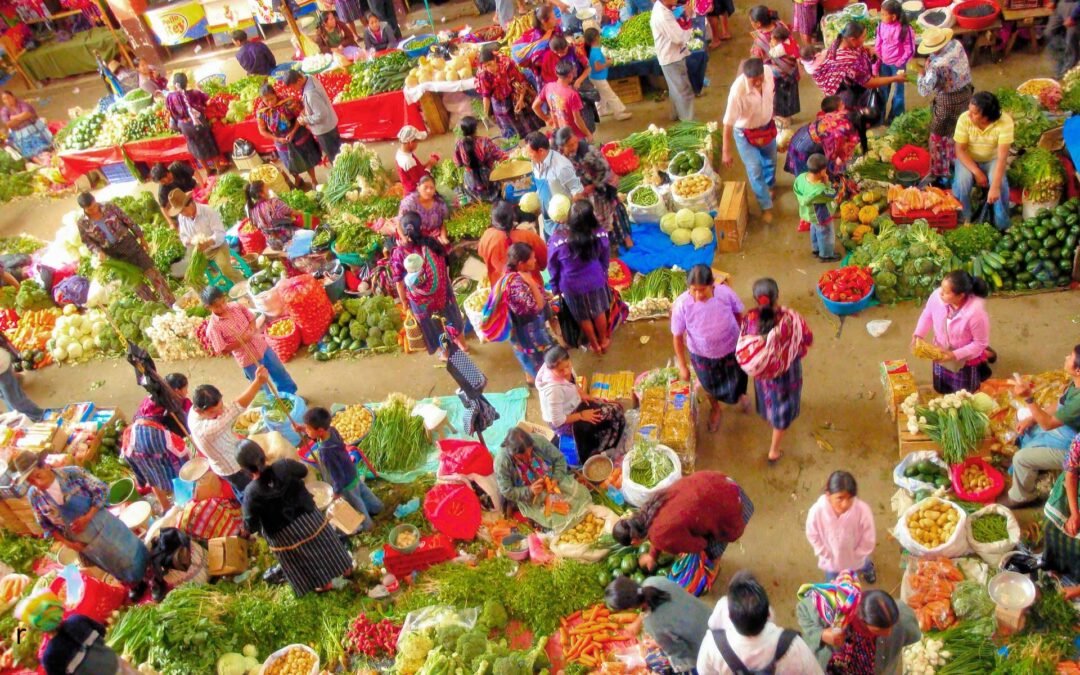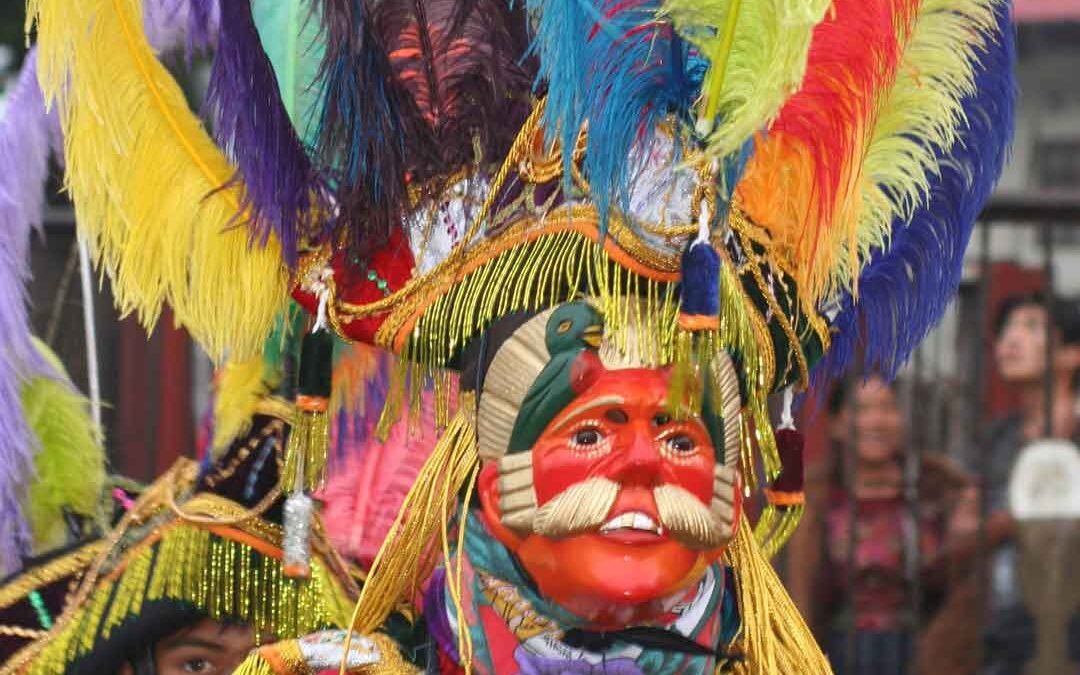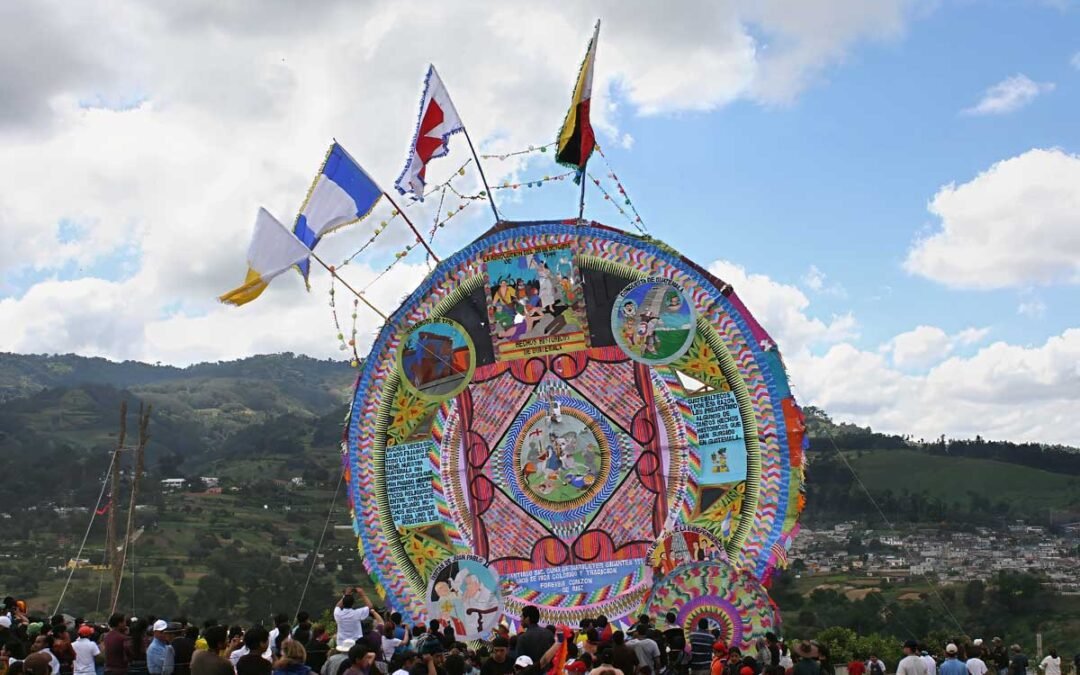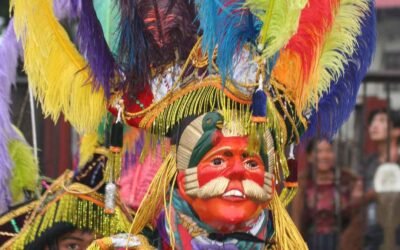Guatemala in December 2025 with Martsam Travel, the Mayan World DMC: Holiday Traditions and Year-End Highlights
- What are the main December holidays in Guatemala?
- What is La Quema del Diablo and should I attend?
- How does Guatemala celebrate Christmas Eve and Christmas Day?
- Are there regional differences in December traditions?
- What foods and drinks should I try in December?
- Is December a good time to visit Guatemala?
- How can I navigate crowds and stay safe during festivities?
Key Takeaways
- Anticipate a December calendar anchored by faith, family, and feasting with indigenous and Catholic traditions influencing events from La Quema del Diablo on 7 December to New Year’s Eve on 31 December. Schedule around the peak dates and attend processions, posadas, and midnight masses to witness the season’s heart rituals.
- La Quema del Diablo kicks off the festivities with bonfires and fireworks that purify homes in preparation for nativity scenes. Stand well back, dress in non-flammable attire, and heed local advice to minimize fire and smoke exposure.
- Posadas and the Virgin of Guadalupe observances emphasize community involvement with night processions, carols, and kids in traditional costumes. Participate graciously by inquiring with hosts about traditions, bringing dishes, and picking up simple songs and salutations.
- Noche Buena revolves around midnight celebrations with tamales, sweet breads and ponche de frutas, leading up to gift-giving at midnight. Book restaurants in advance, pre-order festive foods and double check the mass times at the local churches.
- Our regional styles range from Antigua’s colonial processions and Lake Atitlán’s Mayan-infused ceremonies to Guatemala City’s grand-scale concerts and fireworks. Make time to experience at least two areas to contrast traditions, markets, and public celebrations.
- Holiday Traditions & Highlights of the Year – December 2025 in Guatemala, travel smart during high season, book transport and lodging weeks in advance, carry ear protection for long fireworks, use metric knowledge, which includes kilometers and temperatures. Participate in guided tours to gain perspective, adhere to crowd safety measures, and get consent before photographing figures or faith displays.
Towns hold Las Posadas from December 16 to December 24, with nightly processions, candles, and villancicos. Families celebrate Nochebuena on December 24 with tamales, ponche, and fireworks at midnight.
Cities put on “quema del diablo” early in the month, plus markets with nacimientos and handcrafted ornaments. Coastal regions present pleasant beach days around 28 to 30 degrees Celsius.
With public holidays on December 24, December 25, and December 31, plus busy intercity routes, plan travel four to five.
Guatemala’s December Holiday Traditions
December blends vibrant celebrations of Catholic traditions, Maya origins, and Spanish heritage. Our calendars remain packed with important holidays, while public spaces shine with lights, grounding each occasion in food, faith, and community care.

1. The Devil’s Burning
On 7 December, La Quema del Diablo represents a symbolic purge. Families burn old garbage or cardboard figures of the “devil” to shake out the bad luck and make way for nativity scenes in their homes. Bonfires flare in courtyards and on street corners, and fireworks and small “bombas” add heat and sound.
This rite announces Christmas and the holy days around Christmas. In others, neighbors pile wood together, sit outside, and share atol or coffee as sparks fly. Photos and video are the norm, but the locals still maintain a respectful distance from the flames.
Safety tips:
- Stand upwind; keep 10–15 m from large fires.
- Wear cotton, not synthetics; tie back hair.
- Use licensed fireworks only; follow local rules.
- Bring water or sand; avoid dry brush; supervise kids.
2. Virgin of Guadalupe
12 December, the Feast of the Virgin of Guadalupe, brings plazas alive with processions, church bells and Marian hymns. Kids in traditional dress – embroidered huipiles, woven sashes, miniature sombreros – bring flowers to parish altars. Families leave candles and framed pictures, occasionally blending incense or copal, a sign of the indigenous-Catholic mestizaje common throughout Latin America.
Hot spots to observe are primary parishes in Guatemala City, Antigua’s La Merced district, and Quetzaltenango’s cathedral plaza. Come early, as streets shut down along parade routes.
3. The Posadas

Posadas take place nine nights leading up to Christmas Eve, representing Mary and Joseph’s journey to find lodging, as well as the nine months of Mary’s pregnancy. Every night, a candle-lit entourage that carries small statues or a lantern goes from prearranged homes singing call-and-response carols.
Hosts open their doors, share atol de elote, tamalitos or cookies, and give little presents to the kids. Neighborhoods take turns hosting, so the path changes and connections strengthen.
How to organize your own:
- Pick nine hosts and set a simple route.
- Prepare song sheets; choose a start time.
- Plan small snacks and a brief prayer.
- Assign candles, a lantern, and figures; confirm safety.
4. Christmas Eve
Noche Buena is the heart of the season, with midnight mass, hugs, and a burst of fireworks at 00:00. Tables adorned with tamales (corn dough steamed in leaves), roast turkey, ponche de frutas, hot cocoa, and rompope.
No Christmas trees, but elaborate nativity scenes reign. Attend public masses in Antigua or Guatemala City, reserve a family-run dinner, or view secure city-approved fireworks zones.
5. New Year’s Eve
Cities ring in the year with music, street parties, and grand fireworks on 31 December. Families dine late, toast at midnight, and burn effigies or set off firecrackers for good luck.
Top viewing points include Antigua’s Parque Central, Guatemala City’s Paseo de la Sexta and Zone 1 rooftops, and lakefront spots around Panajachel for wide sky views.
The Heart of Celebration
Family, faith, and food define the holiday season in Guatemala. These values converge in living rooms, church plazas, and street markets, coming together around vibrant Christmas celebrations on Christmas Eve’s most sacred celebration. Communities mix prayer with jubilation, feast on foods that take days to prepare, and embrace visitors with hospitality.
Family
Multi-generational get-togethers fuel the season. Big groups gather on Christmas Eve, often extended family and friends who make their way across cities and villages to join us. Our Christmas trees are smaller than in many American homes, but gifts still lurk beneath them, waiting for the family circle to form.
Common rites punctuate the evening. Families exchange modest presents, pray before dinner, and dine late into the night. Our elders lead the prayers and regale us with stories of holidays gone by and the significance of dishes and decorations. It’s to keep the chain unbroken.
- Jump in a kid-friendly posada or block parade. Ask your host for the itinerary and bring small candles.
- Go to a local Christmas market and purchase colored sawdust, moss, gallitos, and manzanilla garlands for a home nativity scene.
- Learn the flow of Christmas Eve: family prayer, tamales, fireworks after dinner, and midnight hugs.
- Volunteered to help clean up. It’s a little something that says you care.
Faith
Catholicism marks the calendar with Christmas traditions that bring communities together. Midnight Mass on Dec. 24 attracts packed pews, followed by a dawn service. Religious processions parade images through town streets, with their route punctuated by music and incense, creating a vibrant celebration of faith. Nativity scenes take over homes and churches, from mini-shelves to elaborate displays, constructed after market jaunts for sawdust and moss to create landscapes.
Indigenous beliefs coexist with Christian practice in numerous areas, blending Mayan prayers for harvest and protection with the Christmas novena. This unique tradition is not merely a show; it reflects the holiday spirit and is a regular part of life, dealt with sober earnest.
Visitors may step inside local churches in the afternoon to view preparations or experience devotion firsthand, especially during the midnight service, which is a highlight of the Christmas season.
Food

Tamales define the table during the holiday season: tamales colorados with red sauce, paches made from potato dough, chuchitos wrapped tight and firm, and sweet tamales negros for dessert. Cooking is communal, with neighbors sharing corn husks, spices, and time. Fireworks and firecrackers follow the Christmas dinner and burst again at midnight, marking joy across neighborhoods.
- Tamales colorados are the main course for Christmas Eve dinner and are shared after prayer.
- Paches are potato-based tamales common in the highlands and they signal regional pride.
- Chuchitos are smaller, firm tamales often given to guests for the road.
- Tamales negros are sweet, dark tamales saved for late-night dessert.
- Ponche de frutas: Warm fruit punch served to all ages, often in the late evening.
- Atol is a hot, thick corn drink that keeps guests warm during outdoor events.
- Roscas and sweet breads are morning treats for December 25 and January 6.
A Symphony of Senses
A symphony of senses — December in Guatemala marries devout ritual and street vibe during the vibrant Christmas celebrations. Sounds, sights, and smells overlay the cities and villages, from the initial Posadas Navideñas to Christmas Eve fireworks, culminating in Reyes Magos on 6 January, creating an atmosphere that is electric but inviting, rooted and inclusive.
The Sounds
Marimba strokes the fundamental note in plazas and hearths, this warm wooden sonority appropriated for both carols and chachachas. You’ll hear villancicos from choirs, school groups, and families, often before the Christmas dinner or while setting up the nacimientos. Firecrackers pop-popping from the afternoon into midnight on Christmas Eve, and then again on Christmas Day, infusing the night with a brilliant, staccato beat that embodies the holiday spirit.
Processions take their traditional instruments — drums, chirimías, and brass — to parish routes. At Posadas Navideñas, celebrated in Catholic communities, they sing call-and-response verses as they ask for Mary and Joseph to be allowed shelter. Seasonal music stretches from church liturgy to public concerts and informal gatherings, so the same carol might crop up at Mass and in a neighborhood courtyard, showcasing the vibrant celebrations of the Christmas season.
Create a playlist combining Guatemalan marimba carols, chirimía-led processional pieces, and modern Christmas songs by local musicians. Mix in New Year’s staples heard at midnight to reflect the transition from prayer to party, highlighting the unique traditions of this festive time.

The Sights
Streets carry vivid garlands, paper stars, and strings of warm lights draped over balconies, setting the scene for vibrant celebrations during the holiday season. Public squares showcase elaborate nacimientos, which are nativity scenes crafted with colored sawdust, moss, and ceramic figures, often refreshed after market runs for new pieces and greenery. Homes echo the theme with handcrafted ceramic sets and ornaments that draw from Mayan motifs and colonial styles, reflecting unique traditions of the region.
Above church domes on midnight 24 December, fireworks flare and color the sky as part of the Christmas celebrations. Processional lanterns illuminate painted saints and cribs, leading throngs along tight alleys. Many families dress in new clothes for Christmas Eve dinner and functions, showcasing the importance of tradition, with fresh shirts and embroidered huipiles paired with worn-in attire.
Photograph nacimientos with sawdust “rivers,” lantern-lit streets and market stalls hawking moss, pine boughs and figurines. Catch the all-too-brief flash of rockets as church bells toll.
The Smells
Pine needles lace floors and doorways, gracing rooms with a crisp resin aroma. Incense spirals through churches at Mass and Posadas, musky and luscious. Kitchens waft tamal steam scented with masa, banana leaf, and spiced fillings. Bonfires and fireworks introduce smoke and a tangy sulfur note to outdoor evenings.
Trad food establishes the mood inside. Tamales waft next to cups of hot ponche, a fruit punch with cinnamon and cloves, so the home smells warm, sweet, and spiced.
- Pine and cypress are fresh cut greens from markets used for nacimientos and floors.
- Copal incense is a resin burned in churches and processions. It has a deep and woody scent.
- Tamales colorados: tomato-chile sauce, pork or chicken wrapped in leaves.
- Ponche de frutas: Simmered fruit, cane sugar, cloves, and cinnamon sticks.
- Roasted corn and atoles: market stalls serve thick drinks with vanilla or cacao.
- Fireworks smoke: short bursts near midnight on 24 to 25 December across neighborhoods.
Regional Holiday Variations
December in Guatemala blends Catholic observances with Maya heritage, and each region adds its own layer. Christmas Eve is the focal point nationwide: family dinner, gift exchange, and fireworks after midnight mass. Food anchors it—tamales colorados, paches, chuchitos, and sweet tamales negros appear at most tables.
Decorations skew handmade, with ceramic nacimientos, pine and cypress garlands, gallitos air plants, and colored sawdust bought at Christmas markets. The season extends to Epiphany: children place shoes on January 5 to guide the Magi and then open gifts on January 6.
Antigua’s Colonial Charm
Antigua embraces its Spanish-era core, where Christmas traditions come alive. Cobblestone streets are illuminated by warm lights that outline Baroque façades and decaying convents, as tiny processions wind between parishes in the week leading up to Christmas. Old churches hold midnight mass on December 24, and crowds overflow into squares as bells and fireworks intermingle, creating a vibrant celebration of the holiday season.
Nativity scenes are intricate, embodying the essence of traditional Christmas celebrations. Families and parishes construct multi-tiered displays with moss, manzanilla garlands, and sawdust backdrops, often enhancing them with volcano miniatures for local flavor. Pop-up Christmas markets in Parque Central peddle ceramic nativity figures, woven ornaments, and sweet breads, while locals purchase pine and cypress by the bundle for their own Christmas tree.
Plan a self-guided walk: start at La Merced, cross to Santa Catalina Arch for lights at dusk, loop through Parque Central’s market stalls, then end at San José Cathedral for midnight mass. Think of fireworks after dinner, with noise and smoke accompanying this cherished tradition, even as firecracker use remains controversial for safety and air quality.
Lake Atitlán’s Mayan Roots
Regional holiday variations around Atitlán showcase important holidays as Catholic liturgy encounters Kaqchikel, K’iche’ and Tz’utujil traditions. Villages engage in evening prayers and light incense and candles at home altars, honoring both the Nativity and local day keepers. The music often shifts from marimba to drum-led Maya rhythms, creating a vibrant atmosphere in the same plaza.
Every village’s christmas tradition is unique. For example, Santiago Atitlán emphasizes solemn processions and nacimientos adorned with textiles, while San Juan La Laguna focuses on natural dyes where artisans sell beautifully crafted trinkets. San Pedro features youth marimba sets after mass, and some communities even hold boat processions connecting chapels, reflecting their own modern celebrations of the festive season.
Markets are the ideal disruptive entry point. Come early for handwoven tree adornments, beadwork stars, and tamal stands with corn and potato paches. Ask prefotos, dress modestly, and have cash in quetzales for little stalls.

The Capital’s Energy
Guatemala City ramps up with fireworks, concerts, and light displays throughout zones. Central plazas host parades, town choirs, and vendor lines hawking ponche and tostadas, while malls program tree lightings, tableaux, and craft fairs.
Contemporary flourishes define the visual and audio experience. Civic buildings are lit with LED projections, outdoor stages host pop performers, and fireworks-safe zones are overseen by firefighters to complement the classics with safety. Christmas Eve remains focused on family dinner and late-night mass.
Cosmopolitan timetables elongate celebrations with after-work affairs. Top venues: Plaza de la Constitución for state-backed shows, Paseo de la Sexta for street music and markets, Zone 10 for shopping displays, and large churches like La Merced for midnight services.
Sometimes, as in Mexico, on January 5 to 6, toy drives and store windows spotlight the Magi tradition, and little ones set shoes by trees and nacimientos.
Beyond the Main Events
December in Guatemala goes way beyond main events, as vibrant celebrations and unique traditions emerge. From neighborhood rituals to small-town markets, we see how local customs and modern celebrations converge in everyday life.
Local Markets
Holiday markets transform plazas into illuminated passageways of music and hues. Stalls market hand-woven scarves, pine and palm wreaths, clay nativity figures, and deep red and blue candles. You’ll find seasonal staples such as tamales wrapped in banana leaves, warm atol de elote and sugary buñuelos.
Street vendors scurry, and the aroma of cardamom, cinnamon and fresh pine wafts through the air. Gift shopping is easy and intimate. Inquire about motifs. Numerous designs correspond to Maya lineages and villages.
Taste before you buy whenever you can. A little bag of fruit candies, a jar of chiltepe salsa, or a carved gourd is a lightweight, thoughtful present. Music leads the way. Marimba troupes, church choirs, and street performers mingle with fairy lights and paper lanterns.
Anticipate wee processions in the nine nights leading up to Christmas, often accompanied by candles and songs. In the highlands, watch for alfombras—those Semana Santa sawdust carpets that have now made their way into some Advent celebrations.
Must‑visit markets in December:
- Antigua Guatemala’s Parque Central evening stalls (crafts, ornaments, snacks)
- Chichicastenango market (Thursdays/Sundays; textiles, masks, incense)
- Quetzaltenango (Xela) central market arcades (breads, candles, nativity pieces)
- Guatemala City Zone 1 holiday fairs feature modern decor and local design brands.
Community Art
Public space becomes gallery. Murals resound with Indigenous iconography, colonial fronts display nativity scenes, and schools bring out recycled material trees. Numerous pueblos construct intricate nacimientos that integrate Christian icons with indigenous plants, corn, and native clothing, an unmistakable indication of deep-rooted syncretism.
Residents direct the work. Families keep street altars, youth groups refresh murals, and parishes organize lights. The outcome seems communal, not choreographed for visitors.
Identity and memory are art. Dye-sawdust and petal alfombras with community-historical motifs. You might notice motifs that tip their hat to November 1 altars and fiambre, or to Independence Day parades with bands and fireworks.
For a self-guided route, map Antigua’s Calle del Arco and side streets, Guatemala City’s Centro Histórico murals, Xela’s Parque Central blocks, and towns along Lake Atitlán for lakeside nacimientos.
| Aspect | Traditional elements | Modern elements |
| Icons | Nativity scenes, processions, alfombras | Santa, reindeer, LED trees |
| Foods | Tamales, atol, buñuelos, fiambre (Nov 1) | Fusion pastries, specialty coffee drinks |
| squares | plazas, church facades, neighborhood blocks | malls, design shows, online pop-ups |
| Rhythm | Community-led rituals, candles, marimba | Light shows, playlists, social posts |
Digging beyond hubs like Antigua, renowned for Semana Santa but vibrant year-round, adds dimension. Explore mid-week markets, inquire about local calendars, and attend grassroots events with respect for venue space, photography policies, and small fees.
Navigating the Festivities
Guatemala’s December means full schedules, crowded markets, and a mélange of vibrant celebrations influenced by Indigenous and Catholic faiths. Many important holidays coincide with global ones, such as Christmas traditions and New Year’s, but the manner in which towns celebrate them—through elaborate processions, music, and festive food with the community—is unique. Anticipate evening church, midnight fireworks, and late family get-togethers.
Practical tips for travelers: transportation, safety, and etiquette during holiday events
Traffic gluts up in Guatemala City, Antigua, and Quetzaltenango from mid-December through New Year’s, coinciding with vibrant celebrations of Christmas traditions. Plan extra time for connections and avoid tight schedules when commuting between hubs and the highlands. Use only registered taxis, vetted shuttle operators, or app-based ridesharing programs in the city for safety.
In small rural towns, verify pickup locations are in well-lit, central areas. Fireworks abound during this festive period. Bring ear protection for the kids, keep pets inside, and secure valuables in zipped bags. When religious processions occur, step back and allow carriers to pass respectfully, especially during the holiday season.
Avoid walking on alfombras (carpets of colored sawdust and flower petals) until the procession has passed. Dress modestly around churches and cemeteries, ask for permission before taking portraits, and consider leaving a small tip for local assistants who help navigate through the crowds.
Booking accommodations and tours early due to high demand in December
Beds in Antigua, Lake Atitlán, and the western highlands book out quick. Book rooms and intercity shuttles six to eight weeks in advance, and insist on written pickup times. For sunrise climbs, such as Pacaya or Acatenango, arrange guides and gear ahead of time.
December nights are cold at altitude, ranging from zero to ten degrees Celsius. Book culture tours that include church visits, craft markets, and processions with explicit cancellation policies. A note about navigating the festivities: For New Year’s, a lot of hotels enforce minimum stays, so check deposit policies and holiday surcharges up front.
Important dates and times for major celebrations and public holidays
- December 7–8: Local groups start Advent and Immaculate Conception observances. Evening processions soar.
- December 24–25: Nochebuena (24 Dec) dinner and midnight fireworks. Christmas Day is a day off.
- December 31–January 1: Late-night street parties and fireworks at midnight. January 1 is a holiday.
Guatemala honors broader traditions, especially during the holiday season. November 1 (All Saints Day) is key, featuring decorated graves and vibrant celebrations like the giant kite festival. Earlier in the year, Semana Santa showcases large processions and alfombras, which beautifully set the stage for December’s inspiring Christmas traditions and community-focused events.
Joining guided tours to maximize the festive experience in Guatemala
Guides provide organization and secure entry to congested areas, interpret symbols on floats, and schedule stops to view alfombras prior to being tread upon. In Antigua, take part in small-group evening walks that traverse churches, nativity scenes, and market stalls.
In Chichi, take a trusted guide to lead you around church steps, cemeteries, and the market, and to explain rituals merging pre-Columbian traditions with Catholic rites brought in during the 16th to 17th centuries.
Todos Santos Cuchumatán is famous for its November horse race where men race in a drunken, frenzied loop that is awe-inspiring to see. The same area hosts December ceremonies, concerts, and food festivals that tours will link you to without speculation.
Conclusion
To close out the year in Guatemala is to wrap it with warmth, brightness, and affection. Streets shimmer at dusk. Homes brim with tamales, ponche, and fresh pine. Fireworks snap at midnight on the 24th and 31st. Markets buzz with color. Parades go by with drums and dancing. Faith shows up in the day-to-day, not just church. Martsam Travel crafts these memorable journeys with a local soul, helping you experience the season as locals do.
To travel wise, outline a defined path, reserve accommodations in advance, and bring pocket change. Taste one local specialty a day. Attend a posada, just one. For a slow day, visit a small town like Antigua or Cobán. View the firework displays from a secure location with expansive views.
To keep the trip flowing and rich, share your dates, budget, and must-sees. I can chart a slim plan that matches your stride.
Frequently Asked Questions (FAQs)
What are the main December holidays in Guatemala?
Guatemala marks the Feast of the Immaculate Conception on December 8, La Quema del Diablo on December 7, and vibrant Christmas celebrations from December 24 to 25, culminating in New Year’s Eve on December 31. Many towns host processions, posadas, and local fairs during the holiday season
What is La Quema del Diablo and should I attend?
It’s the ‘Burning of the Devil’ on December 7th, a unique tradition to symbolically cleanse homes before the Christmas season. Other barrios set fire to piñatas or paper dummies during this vibrant celebration. Attend sponsored events, maintain a safe distance, and respect local fire and air quality warnings.
How does Guatemala celebrate Christmas Eve and Christmas Day?
On December 24, families gather for a festive Christmas dinner, enjoy fireworks at midnight, and partake in the opening of presents. December 25 is marked by attending church services and visiting relatives, embodying the holiday spirit with vibrant celebrations and boisterous fireworks.
Are there regional differences in December traditions?
Yes. Antigua has historic processions and posadas, showcasing unique traditions. Guatemala City presents large light displays and concerts during the holiday season. In the Highlands, Mayan and Catholic traditions combine with marimba music and native dances, enriching the vibrant celebrations.
What foods and drinks should I try in December?
Don’t miss out on tamales colorados, chuchitos, ponche de frutas (hot fruit punch), buñuelos, and rellenitos during the vibrant celebrations of the holiday season. In other areas, there will be paches (potato tamales) and spiced hot chocolate, perfect for your Christmas traditions.
Is December a good time to visit Guatemala?
Yes, it’s our dry season of vibrant celebrations and blue skies.
- Christmas and New Year – premium pricing and limited availability.
- Book travel and accommodation in advance. Bring layers for cooler nights, particularly in highland cities such as Antigua and Quetzaltenango.
How can I navigate crowds and stay safe during festivities?
Map out your routes in advance, take only licensed taxis or ride-hailing apps, and keep your valuables close during the holiday season. Be vigilant near fireworks and bonfires, especially during vibrant celebrations. Check event times with the venue and navigate with a partner in congested spaces.











